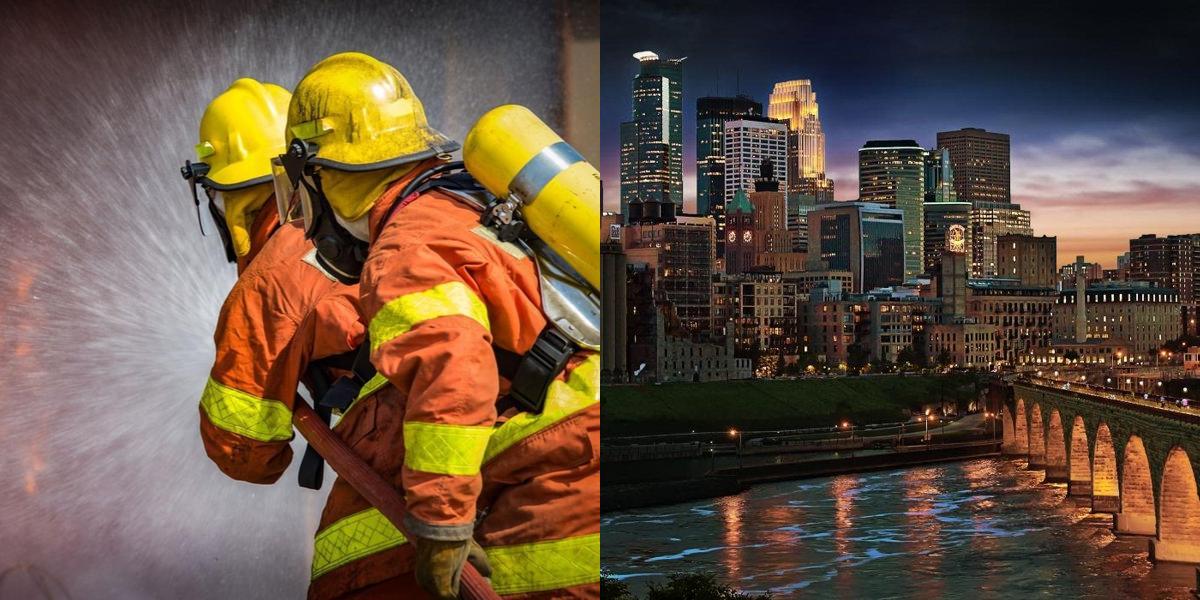How to Become a Firefighter in Minnesota

What is a Firefighter?
A firefighter is a highly trained professional who responds to emergency situations involving fires and other hazardous incidents. Their primary responsibility is to protect life and property by extinguishing fires, rescuing individuals, and providing immediate medical assistance. Firefighters also play a crucial role in educating the community about fire safety and prevention.
How do I get a job as a Firefighter?
Getting a job as a firefighter can be a competitive process, but with the right qualifications and preparation, you can increase your chances of success. Here are some steps to help you get a job as a firefighter:
-
Obtain the necessary certifications: As mentioned earlier, you will need to complete a firefighter training program and obtain the required certifications, including EMT certification. Make sure you research the specific requirements in your area and meet all the necessary criteria.
-
Gain relevant experience: To stand out from other applicants, it is beneficial to gain some relevant experience in the field. This can be done through volunteer work or internships at local fire departments or through participation in community fire service organizations. This experience will not only enhance your skills and knowledge but also demonstrate your commitment to the profession.
-
Prepare for the hiring process: The hiring process for firefighters often includes multiple stages, including written exams, physical fitness tests, interviews, and background checks. Prepare for these steps by studying fire science and emergency medical services, practicing physical fitness exercises, and researching common interview questions. Taking practice exams and participating in mock interviews can also help you feel more confident and prepared.
-
Network within the firefighting community: Building connections within the firefighting community can be beneficial when seeking job opportunities. Attend local fire department events, join professional organizations, and participate in training seminars or conferences. Networking can provide you with valuable insights, mentorship opportunities, and potential job leads.
-
Customize your application materials: When applying for firefighter positions, make sure to tailor your resume and cover letter to highlight your relevant skills, certifications, and experience. Emphasize your ability to work well under pressure, your physical fitness, and your commitment to public safety. Include any additional certifications or specialized training that may be relevant to the specific department you are applying to.
-
Be prepared for the interview: If you are invited for an interview, it is important to be well-prepared. Research the fire department and the community it serves, understand the department's mission and values, and be ready to articulate why you are interested in joining their team. Prepare examples of situations where you have demonstrated teamwork, problem-solving skills, and leadership qualities. Dress professionally, arrive early, and be confident and respectful during the interview.
-
Maintain physical fitness: Firefighting is a physically demanding job, so it is important to maintain a high level of physical fitness. Regularly engage in cardiovascular exercise, strength training, and flexibility exercises to ensure you are prepared for the physical demands of the job. Staying in good shape not only helps during the hiring process but also improves your overall performance as a firefighter.
Career Paths and Opportunities after Becoming a Firefighter
Becoming a firefighter opens up a range of career paths and opportunities within the fire service. While the primary role of a firefighter is to respond to fires and other emergencies, there are various specializations and advancements that firefighters can pursue. Here are some career paths and opportunities after becoming a firefighter:
-
Promotions within the fire department: Fire departments typically have a hierarchical structure that allows firefighters to advance in rank and responsibility. With experience and additional training, firefighters can work towards promotions such as Fire Lieutenant, Fire Captain, Battalion Chief, and Fire Chief. These positions often involve supervisory and leadership responsibilities.
-
Specialized roles: Firefighters can specialize in various areas within the fire service. Some common specialized roles include Hazardous Materials (Hazmat) Technician, Technical Rescue Specialist, Wildland Firefighter, Fire Investigator, and Fire Inspector. These roles require additional training and certifications to handle specific situations and tasks.
-
Emergency Medical Services (EMS): Many firefighters are also certified Emergency Medical Technicians (EMTs) or Paramedics. This allows them to provide medical assistance at the scene of emergencies and transport patients to hospitals. Firefighters can choose to focus on EMS and work closely with healthcare professionals to provide critical care.
-
Training and education: Firefighters can also pursue careers in training and education. They can become instructors at fire academies, community colleges, or vocational schools, where they train future firefighters and provide continuing education for current firefighters. Some firefighters also pursue advanced degrees in fire science, emergency management, or public administration to take on administrative roles within the fire service.
-
Special operations teams: Fire departments often have specialized teams that handle unique and challenging situations. These teams may include Hazardous Materials (Hazmat) teams, Technical Rescue teams, Swiftwater Rescue teams, or Urban Search and Rescue (USAR) teams. Joining these teams requires additional training and a high level of expertise in specific areas.
-
Municipal and government positions: Firefighters can also pursue careers in municipal or government positions related to fire safety and emergency management. These positions may involve developing fire safety codes and regulations, conducting fire inspections, managing emergency operations centers, or working in emergency management agencies at the local, state, or federal level.
-
International opportunities: Firefighters who are interested in experiencing different cultures and working in diverse environments can explore international firefighting opportunities. Some organizations offer firefighting exchange programs, where firefighters can work temporarily in other countries to share knowledge and expertise.
How Much does a Firefighter Make?
The salary of a firefighter can vary based on factors such as location, experience, and the size of the fire department. According to the Bureau of Labor Statistics, the median annual wage for firefighters was $50,850 in May 2020. The lowest 10 percent earned less than $25,850, while the highest 10 percent earned more than $94,720.
For entry-level firefighters, the starting salary can be lower than the median wage. However, as they gain experience and move up the ranks, their salary can increase significantly. It's important to note that these figures are just averages, and the actual salary can vary depending on various factors.
Final Thoughts
Becoming a firefighter is a rewarding and noble career choice. It requires dedication, physical fitness, and a commitment to public safety. By obtaining the necessary certifications, gaining relevant experience, and preparing for the hiring process, you can increase your chances of securing a job as a firefighter. Once you have entered the fire service, there are numerous career paths and opportunities to explore, allowing you to continually grow and make a positive impact in your community.
Thinking about making a career switch? Dreambound has written thorough guides to help you understand different options available to you.

Marce Arnejo is part of the Sales team at Dreambound. Her role involves seeking out schools and institutions to provide valuable opportunities for students seeking a career in the healthcare sector. Beyond her professional life, Marce is passionate about music and gaming. She finds joy in exploring various genres of music and using gaming to unwind and immerse herself in virtual worlds. Her diverse interests enrich her personal life and contribute to her work by bringing new ideas and creativity.



